62 Percent of Small Business Owners Say Facebook Ads Don’t Work.
Results of this study were released by Small Business Trends earlier this year. Inc.com followed up on this study begging the question… Is it user error. This alarming stat was recently presented in an industry update training and prompted a dive into how businesses, both big and small, can measure social success.
How to Measure Social Ad Success
1 – Enable & Use Google Analytics
Google analytics is the cheapest (free) way to gauge success with your social platforms. You just have to know where and how to find the stats to back up your efforts. Diving into channels is always a good place to start.
All Traffic – – > Channels
Under this view you can look at sessions, new users and those trusty engagement metrics that help us quantify I tend to focus on time on site for social. Many social posts are not meant to drive deep engagement with a site. They are meant to provide direct links to useful content. For ecommerce a longer site duration visit will often show up in sales when you run attribution reports.
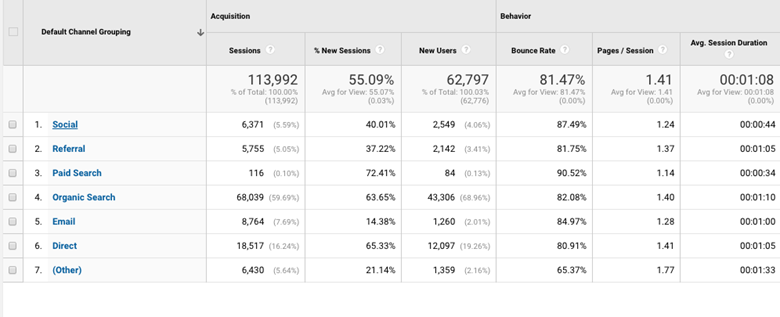
Drill down further to look at a more granular view.

One larger difference in ads on search vs social that often times leads to the perception that they are ineffective is that with search people are actively seeking your offer. In search you are often seeking people who do not yet know they need your product, service, knowledge… It might take them a little longer to convert. In walks our assisted conversions and funnel reports.
Conversions – – > Multichannel Funnels –> Assisted Conversions/ Top Conversion Paths
Assisted conversions will break down how many conversions your social channels lend a hand to…
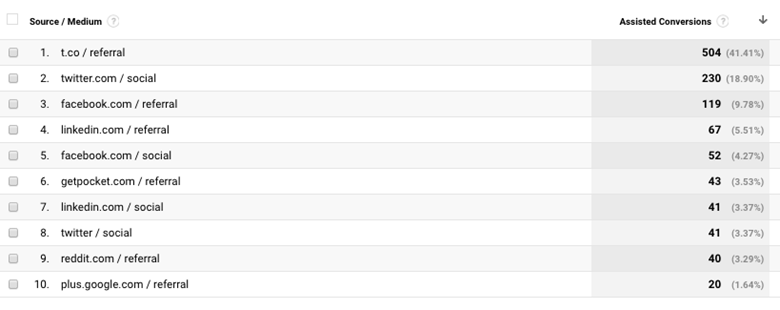
Top Conversion Paths show you where the final conversion took place.

2 – Explore Brand Lift Study Opportunities
To be eligible for this level of study, advertisers must meet certain requirements. We are currently engaged in a study on Facebook with a education client. After reaching out to the rep, campaigns are set up as normal. Following ad impressions Facebook polls viewers on ad recall. Advertisers have the ability to ask up to three questions. Including:
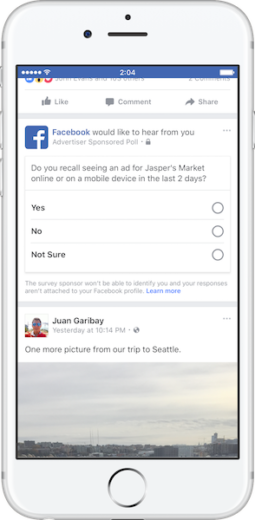
- Do you recall seeing an ad for [BRAND/PRODUCT] online or on a mobile device in the last 2 days?
- Which of the following comes to mind first when you think of [PRODUCT]?
- Will you recommend [BRAND/PRODUCT] to a friend?
- Have you heard of [BRAND]?
- Will you buy/consider [BRAND/PRODUCT] the next time you shop for [CATEGORY]?
3 – Use Platform Analytics
All social channels provide some level of detail into how ads are performing. Each social channel provides a unique view into performance.
Twitter offers a high level snapshot that’s hard to mis-interpret. They make it so user-friendly to understand the stats it makes us want to tweet more. Below we see an example of clicks coming from recent tweets. They also provide nice little tid-bits of information
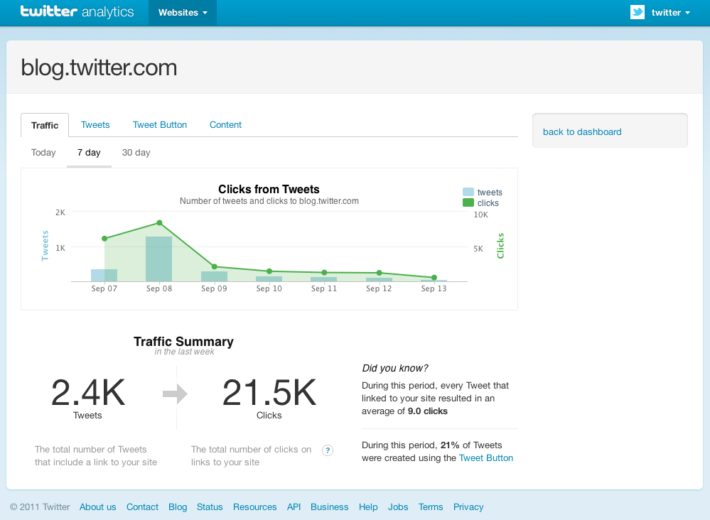
Facebook on the other hand allows you to get very granular with metrics showing stats from the obvious performance to engagement with posts in general, different types of engagement posts, as well as delivery.

One often overlooked metric is nested under the delivery and can help save dollars and show success. Reach & Frequency
Reach shows us how many people saw our ad at least once. While frequency can tell us how many times people are seeing our ad. If a frequency number is high you can pull back in spend and allocate to another audience.
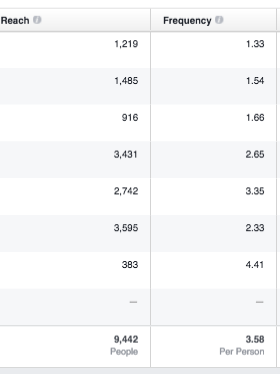
4 -Use a Link Tracking Tool
My go to link tracking tool is bitly.com. It may seem a bit old school… previously these tools were used to shorten those incredibly long urls. Then went to the wayside as advertising became more savvy hiding those links behind learn more buttons. However, these tools are worth a second glance. They have stepped up their game offering analytics and enterprise level insights. You can get some great insights into the response to your social efforts with the free tool. This would be a perfect solution for the small business owner who isn’t committed to learning the in’s and out’s of Google Analytics.
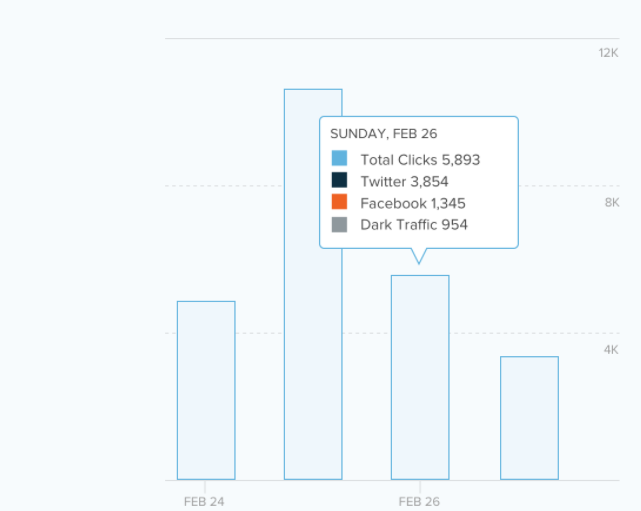
5 – Use a Management or Reporting Tool
There are a plethora of social management & reporting tools available that will roll up all campaigns, across all platforms to provide additional insight into the impact of your social efforts.
Hootsuite, Sprout and Adstage are a few I have experience with. My favorite is probably Adstage with it’s ability to not only track paid social, but all paid efforts in one place from Google & Bing to Facebook & Linked-In.
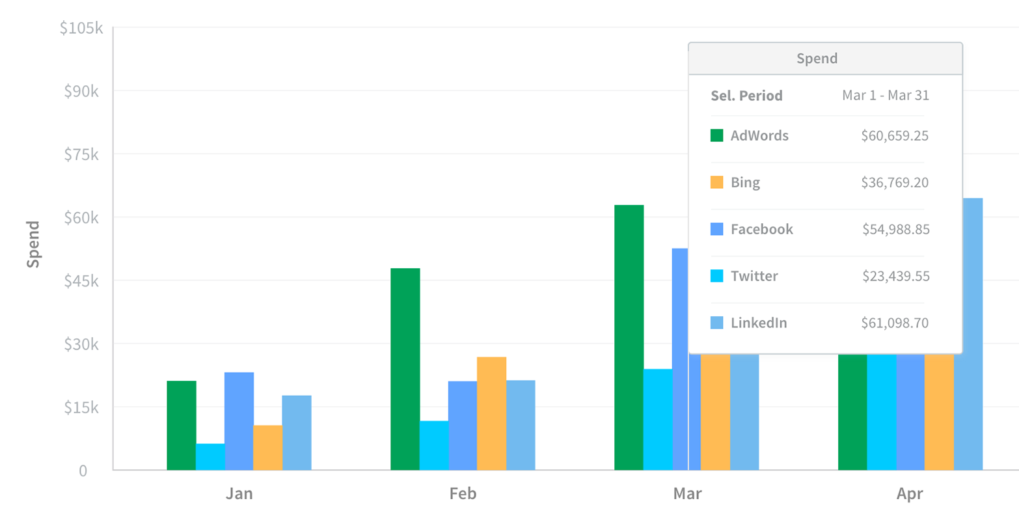
Don’t be Part of the 63%
With so many different avenues to help prove success through social media we encourage you… Don’t be part of the 63% that put ads out there into the world without measuring and understanding success. Between the free and paid tools there is a solution that can help the savvy marketer to the small business owner. Social is an avenue that has great potential to reach new customers and increase your key metrics.




